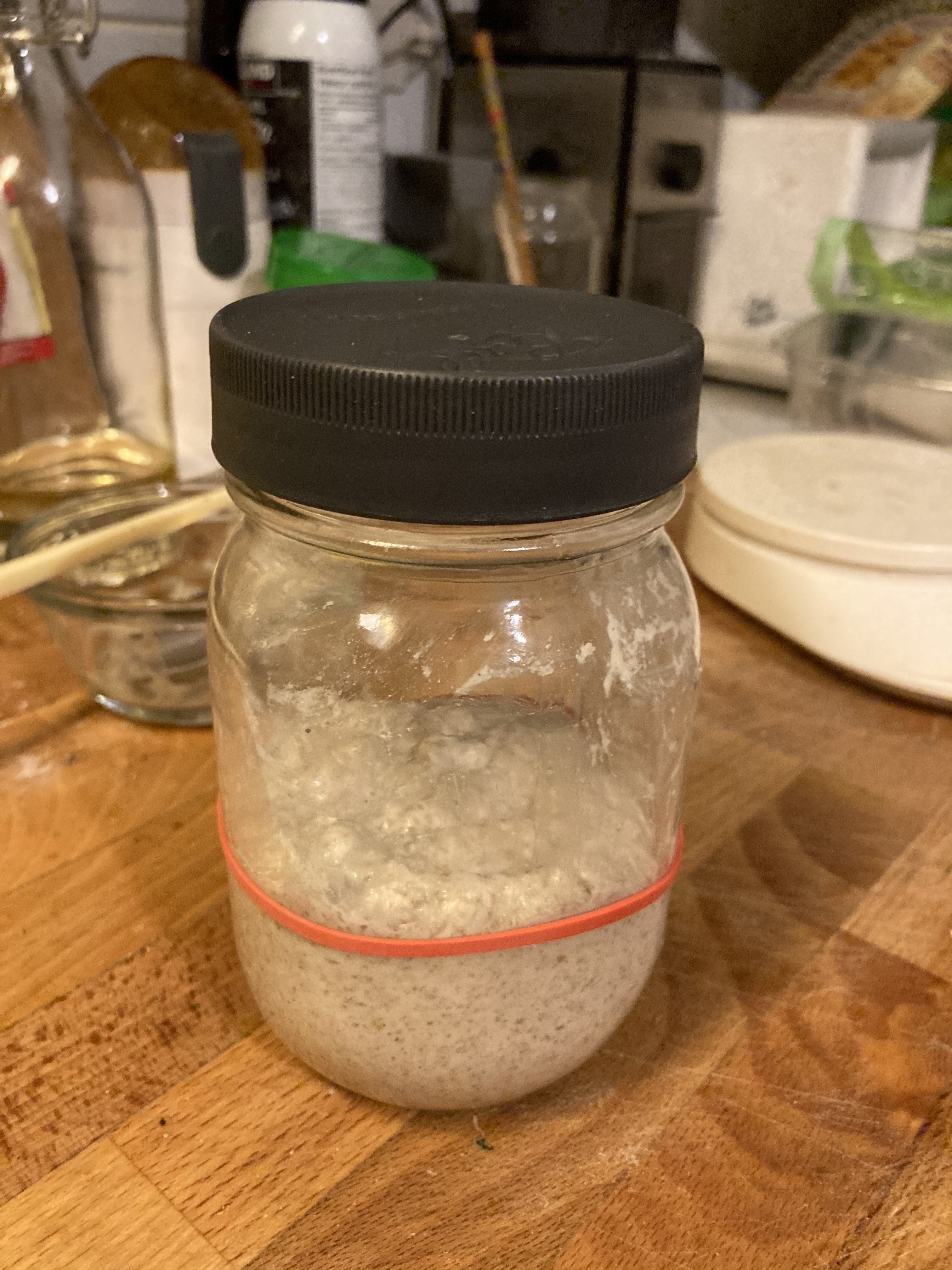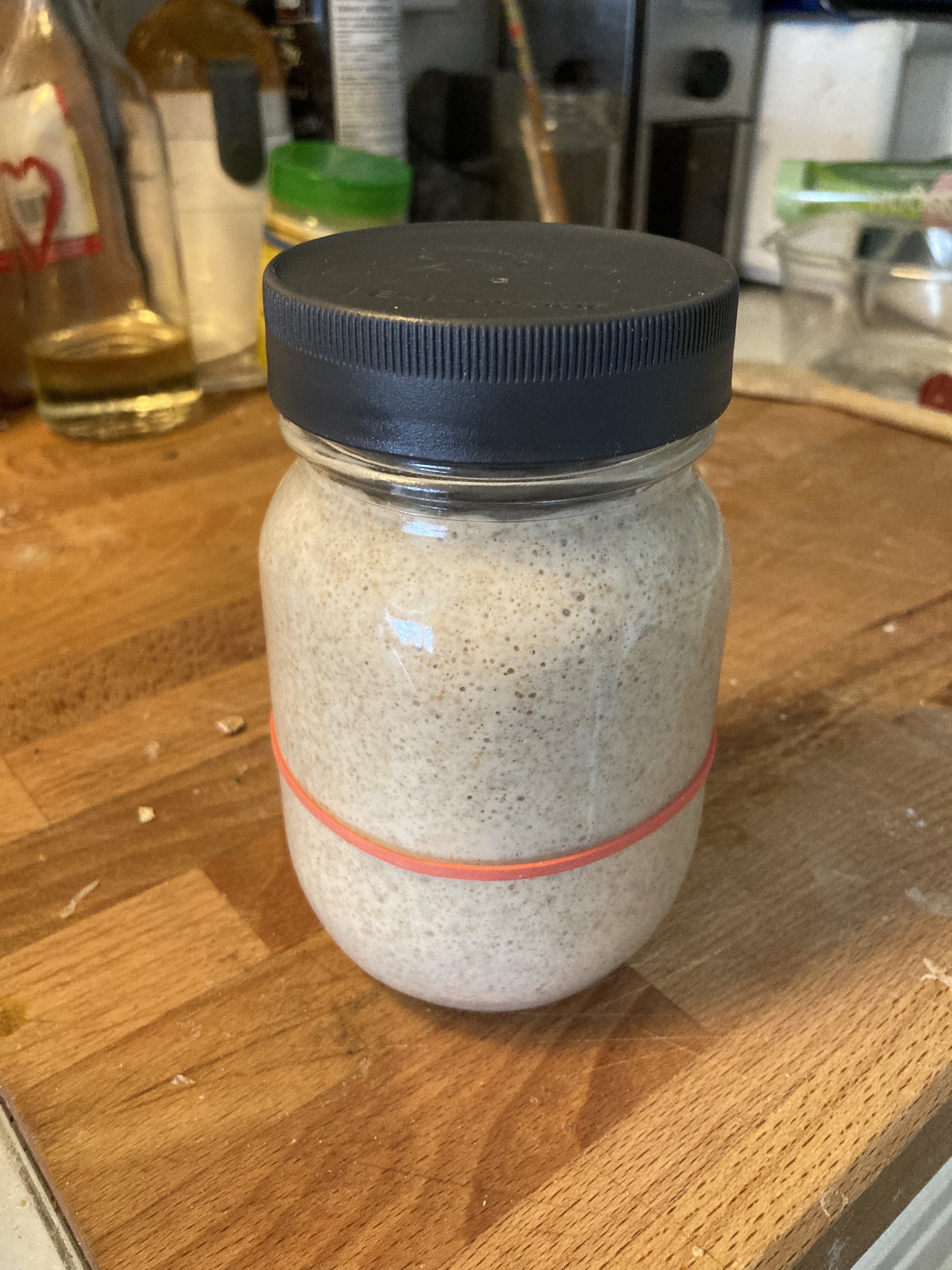To make sourdough bread you need a sourdough starter - this is a live yeast colony that you lovingly pamper and feed and take for walks and …
Well no - except for the regular feeding part.
Option 1: buy one: https://breadtopia.com/store/sourdough-starter-live/ Option 2: make one!
Making your own starter requires a little patience and about 5-10 minutes a day for a couple of weeks. Here’s the video and recipe I used to make mine:
Feeding Schedule Guide: http://bit.ly/sourdoughschedule
Once your sourdough is established (10-14 days after you start), it’ll be ready to bake, although the flavour will continue to improve over the next month or so.
My sourdough feeding regime is simple. My main colony is stored in a 500ml mason jar in the fridge.
- keep 25g to 30g of starter in the mason jar – discard the rest (there are lots of articles online about using discarded sourdough starter for other recipes)
- add 100g of room temperature filtered water
- mix the starter thoroughly into the water (I use a chopstick)
- add 50g of dark rye flour, and 50g of all-purpose flour
- mix thoroughly again (with the chopstick)
- place a rubber band around the jar (so you can see how far it rises)
- loosely lid
Here is my little colony before and after feeding. I fed it at night right before bed; the second image is about 9 hours later.


My sourdough lives in the fridge and I feed it once a week when I bake; you can also keep yours on the kitchen counter and feed it daily.
Notes:
- most of the yeast comes from the flour (not from the air in your kitchen) – so use a reasonable quality unbleached flour. I went to bulk-barn and bought their unbleached dark-rye and unbleached AP flour for mine.
- Some people say that tap water isn’t good because of the chlorine – others say it doesn’t matter. I used Britta water, but you can also fill a large jug with tap water and let it sit for 24 hours or so – the chlorine will evaporate out and then you can use it.
Next up - bread!